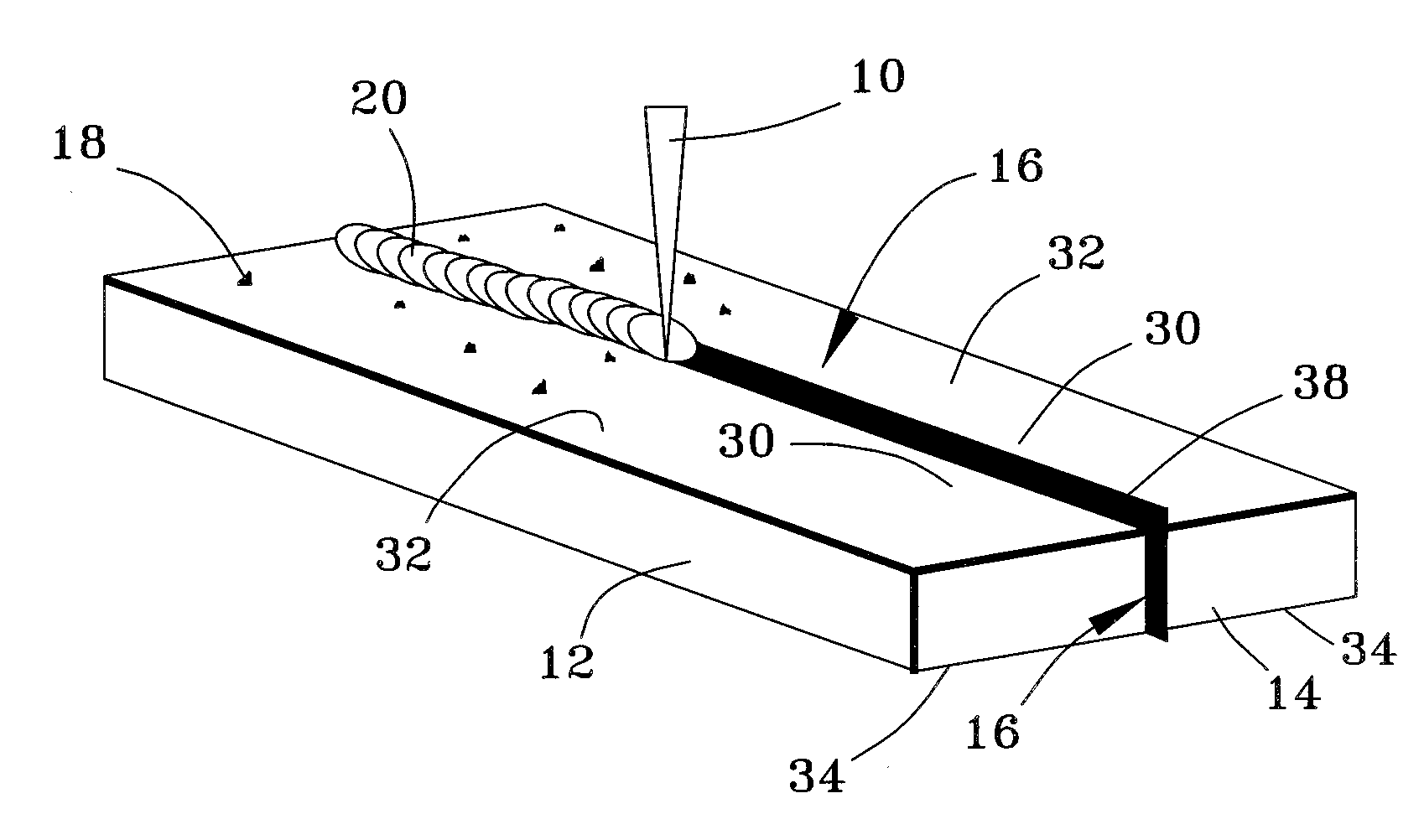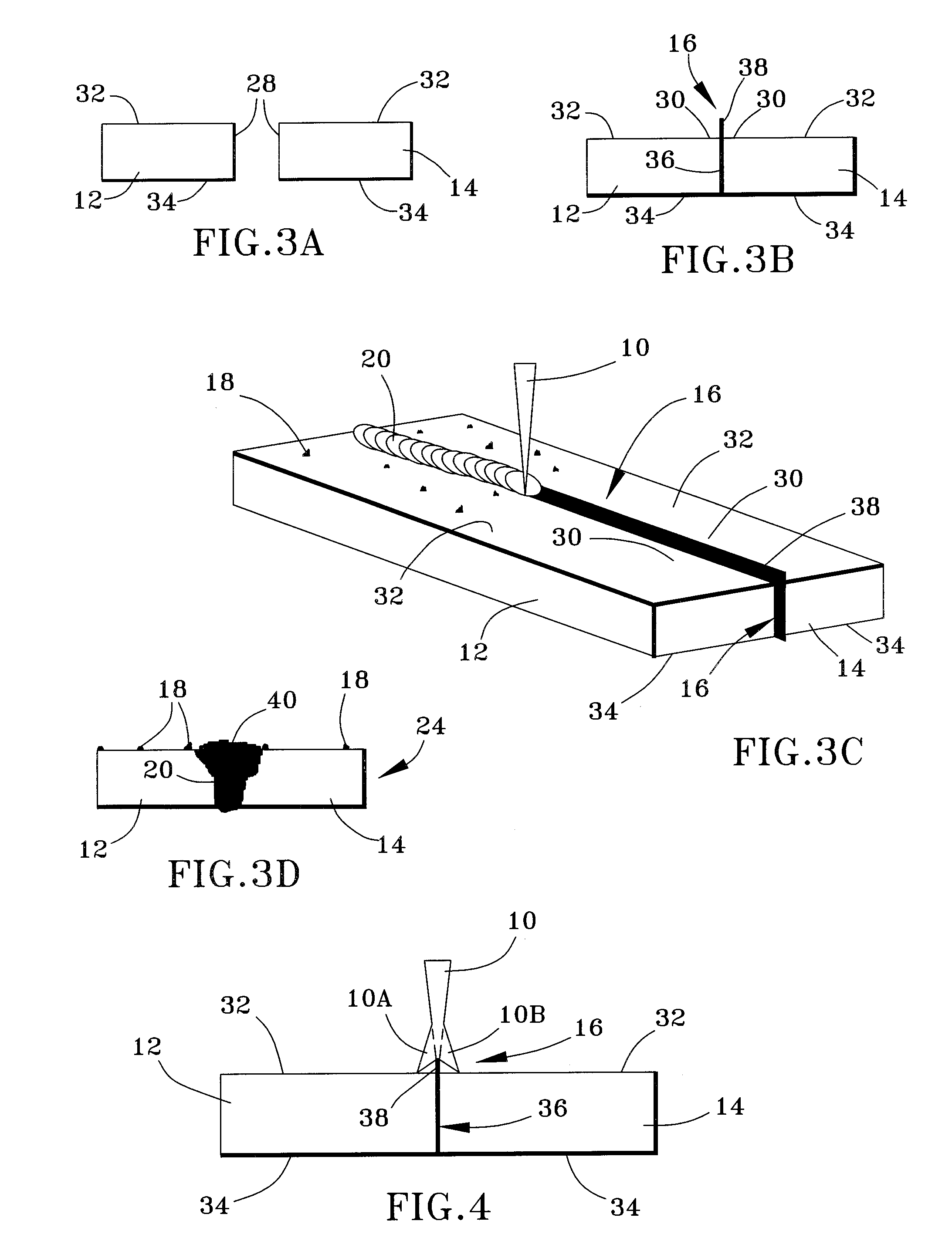High-powered laser beam welding and assembly therefor
a high-power laser and laser beam technology, applied in welding/soldering/cutting articles, metal working devices, manufacturing tools, etc., can solve the problems of large amount of weld spatter and weld metal discontinuities, and the general limitation of welding with high-power lasers to relatively thin metal thicknesses
- Summary
- Abstract
- Description
- Claims
- Application Information
AI Technical Summary
Benefits of technology
Problems solved by technology
Method used
Image
Examples
Embodiment Construction
[0017]FIGS. 3A through 3D and 4 represent a process for high-powered laser beam welding articles to create a weld joint 20 (FIGS. 3C and 3D) that extends entirely through the thickness of the articles without creating discontinuities and with minimal spattering during the welding process. The process is particularly well suited for fabricating components for gas turbines used in power generation and aerospace applications, though the process can be utilized to produce components for a wide variety of applications, including infrastructure, medical, industrial applications, etc. For convenience, reference numbers used in prior art FIGS. 1A-1C and 2A-C are also used in FIGS. 3A-D and 4 to identify functionally similar elements.
[0018]FIG. 3A represents a pair of articles 12 and 14 that can be welding using a high-powered laser beam welding process of this invention. The articles 12 and 14 may be castings, wrought, or powder metallurgical form, and may be formed of a variety of material...
PUM
| Property | Measurement | Unit |
|---|---|---|
| power level | aaaaa | aaaaa |
| power level | aaaaa | aaaaa |
| diameter | aaaaa | aaaaa |
Abstract
Description
Claims
Application Information
 Login to View More
Login to View More - R&D
- Intellectual Property
- Life Sciences
- Materials
- Tech Scout
- Unparalleled Data Quality
- Higher Quality Content
- 60% Fewer Hallucinations
Browse by: Latest US Patents, China's latest patents, Technical Efficacy Thesaurus, Application Domain, Technology Topic, Popular Technical Reports.
© 2025 PatSnap. All rights reserved.Legal|Privacy policy|Modern Slavery Act Transparency Statement|Sitemap|About US| Contact US: help@patsnap.com



